[ad_1]

Regulators in the US say the atrial fibrillation history feature can be used to assess other devices.
[ad_2]
Source Article Link


[ad_1]

Regulators in the US say the atrial fibrillation history feature can be used to assess other devices.
[ad_2]
Source Article Link

[ad_1]
Apple’s atrial fibrillation (AFib) history feature on Apple Watch has been qualified by the FDA under its Medical Device Development Tools (MDDT) program, the first digital health technology feature of its kind to do so.

Since 2022, Apple Watch has supported AFib History, which allows users diagnosed with atrial fibrillation to view an estimate of how frequently their heart is in this type of irregular rhythm.
The feature analyzes pulse rate data collected by a photoplethysmography (PPG) sensor to identify episodes consistent with AFib and provides the user with a retrospective estimate of AFib burden (a measure of the amount of time spent in AFib during past Apple Watch wear). Apple says the feature is intended for individuals aged 22 years or older who have been diagnosed with atrial fibrillation.
The AFib History feature received FDA clearance in the United States just prior to its announcement by Apple, after being validated in a clinical study. The MDDT program under which the feature was approved today is the FDA’s method of qualifying tools that medical device sponsors can choose to use in the development and evaluation of medical devices.
According to the FDA, the Atrial Fibrillation History feature is:
(Via MyHealthyApple.com.)
Apple is expected to announce iOS 18 during its WWDC keynote on June 10, and new features have already been rumored for many apps, including Apple Music, Apple Maps, Calculator, Messages, Notes, Safari, and others. Below, we recap iOS 18 rumors on a per-app basis, based on reports from MacRumors, Bloomberg’s Mark Gurman, and others: Apple Maps: At least two new Apple Maps features are…
In his Power On newsletter today, Bloomberg’s Mark Gurman outlined some of the new products he expects Apple to announce at its “Let Loose” event on May 7. Subscribe to the MacRumors YouTube channel for more videos. First, Gurman now believes there is a “strong possibility” that the upcoming iPad Pro models will be equipped with Apple’s next-generation M4 chip, rather than the M3 chip that…
Apple’s upcoming iPad Pro models will feature “by far the best OLED tablet panels on the market,” according to Display Supply Chain Consultants. Set to be announced on May 7, the OLED iPad Pro models will feature LTPO (a more power efficient form of OLED), a 120Hz ProMotion refresh rate, and a tandem stack and glass thinning that will bring “ultra-thin and light displays” that support high…
Bloomberg’s Mark Gurman today said that iOS 18 will “overhaul” many of Apple’s built-in apps, including Notes, Mail, Photos, and Fitness. Gurman did not reveal any specific new features planned for these apps. It was previously rumored that the Notes app will gain support for displaying more math equations, and a built-in option to record voice memos, but this is the first time we have…
Best Buy today has discounted Apple’s M1 iPad Air (64GB Wi-Fi) to a new all-time low price of $399.99 in the Starlight color option, down from $599.99. Best Buy says this deal will last through the end of the day, and it’s only available in one color at this record low price. Note: MacRumors is an affiliate partner with Best Buy. When you click a link and make a purchase, we may receive a…
Apple has announced it will be holding a special event on Tuesday, May 7 at 7 a.m. Pacific Time (10 a.m. Eastern Time), with a live stream to be available on Apple.com and on YouTube as usual. The event invitation has a tagline of “Let Loose” and shows an artistic render of an Apple Pencil, suggesting that iPads will be a focus of the event. Subscribe to the MacRumors YouTube channel for more …
With iOS 17.5, Apple is adding a “Repair State” feature that is designed to allow an iPhone to be sent in for service without deactivating Find My and Activation Lock. The fourth iOS 17.5 beta that came out today adds a “Remove This Device” option for all devices in Find My, and using it with an iPhone puts that iPhone into the new Repair State. Right now, sending an iPhone to Apple to be…
[ad_2]
Source Article Link

[ad_1]
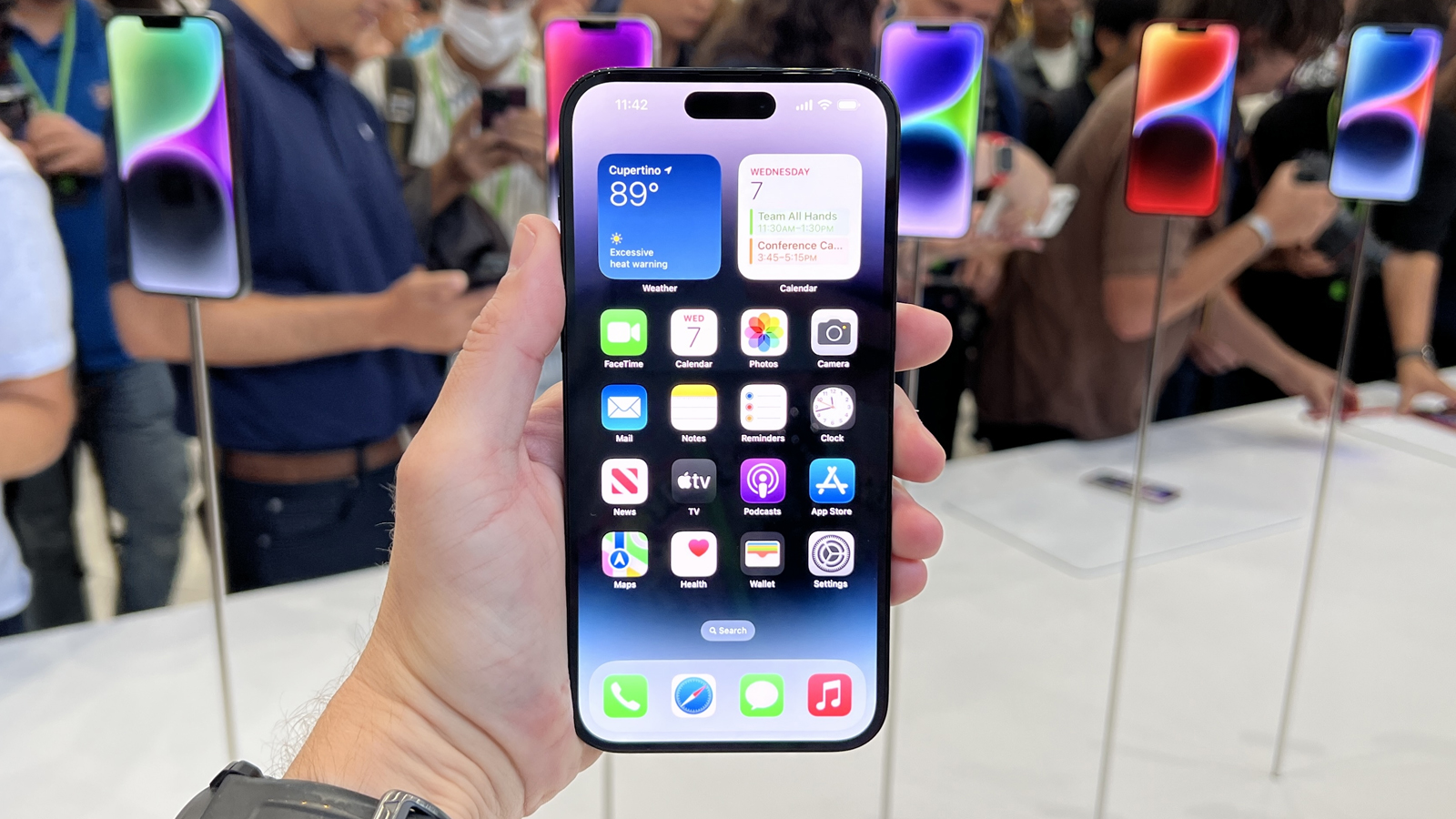
A new feature was discovered in the files of the fourth iOS 17.5 beta called Repair State. What it does is place your iPhone in a special hibernation mode that doesn’t force people to disable Find My when sending their device in to be serviced.
The way it works currently is whenever an iPhone is taken to a repair shop, users must turn off Find My in the settings menu. Doing so hasn’t been a problem for anyone until the introduction of the Stolen Device Protection feature on iOS 17.3.
Stolen Device Protection “adds extra security steps” to certain functions like requiring biometric authentication whenever an iPhone owner wants to access stored credit card information. It also adds a time delay when changing certain sensitive settings, such as Find My. This forces you to wait a full hour until you’re allowed to use your smartphone again regardless of how long repairs took. As a result, people have begun to complain about the lockout.
Repair State is the company’s solution. It lets users confirm “their Apple ID and password” designating them as the iPhone’s owner to technicians without having to deactivate Find My or Stolen Device Protection. According to MacRumors, phones under this mode have a “Ready for Repair” label alongside a stethoscope icon inside the list of devices.
It’s been confirmed the feature is “only available on iPhones”. None of Apple’s other gadgets have been spotted with Repair State. You can check it out yourself by installing iOS 17.5 beta 4 from the tech giant’s Developer program However, it is recommended that you leave it alone. 9To5Mac in their report states users can enable the mode “when trying to remove their iPhone via [the] Find My app.” But once activated, there isn’t a way to disable Repair State.
The publication states there may be two reasons why you can’t revert the phone back to normal. It’s either because the company has yet to implement a way to turn off the mode or an Apple technician must first complete repairs before removing the mode.
There doesn’t appear to be any performance issues associated with Repair State. None of the reports we sifted through mention anything relating to iPhones becoming inoperable. In fact, it’s quite the opposite as the hardware apparently “remains fully functional.” Still, just to be on the safe side, it’s better that you don’t mess with it.
Apple’s WWDC 2024 is the tech giant’s next major event kicking off on June 10. While we don’t know what’ll be shown on the big day, we do expect to see iOS 18 make its world debut and Repair State may be one of the new tools on display.
Until then, check out TechRadar’s list of the best iPhone for 2024.
[ad_2]
Source Article Link

[ad_1]
Starting with iOS 18, the Calendar app on the iPhone will feature integration with the Reminders app, according to information obtained by AppleInsider.

The report claims that iPhone users will be able to schedule and organize reminders directly within the Calendars app, without needing to open the Reminders app. Reminders are expected to be visible within the Day, Week, and Month calendar views.
The change will extend to the Mac with macOS 15, the report says.
The same publication recently reported that the Calculator and Notes app will also be integrated on iOS 18, and said that the update will include new Safari features such as “Intelligent Search” and “Web Eraser.” We recently recapped iOS 18 rumors on a per-app basis, with new features also expected for Apple Music, Messages, and more.
Apple is expected to announce iOS 18, macOS 15, and other software updates during its WWDC keynote on June 10. The first betas of iOS 18 and macOS 15 will likely be made available to members of Apple’s Developer Program immediately following the keynote, and the updates should be widely released in September.
In his Power On newsletter today, Bloomberg’s Mark Gurman outlined some of the new products he expects Apple to announce at its “Let Loose” event on May 7. Subscribe to the MacRumors YouTube channel for more videos. First, Gurman now believes there is a “strong possibility” that the upcoming iPad Pro models will be equipped with Apple’s next-generation M4 chip, rather than the M3 chip that…
Bloomberg’s Mark Gurman today said that iOS 18 will “overhaul” many of Apple’s built-in apps, including Notes, Mail, Photos, and Fitness. Gurman did not reveal any specific new features planned for these apps. It was previously rumored that the Notes app will gain support for displaying more math equations, and a built-in option to record voice memos, but this is the first time we have…
Apple’s upcoming iPad Pro models will feature “by far the best OLED tablet panels on the market,” according to Display Supply Chain Consultants. Set to be announced on May 7, the OLED iPad Pro models will feature LTPO (a more power efficient form of OLED), a 120Hz ProMotion refresh rate, and a tandem stack and glass thinning that will bring “ultra-thin and light displays” that support high…
Apple has announced it will be holding a special event on Tuesday, May 7 at 7 a.m. Pacific Time (10 a.m. Eastern Time), with a live stream to be available on Apple.com and on YouTube as usual. The event invitation has a tagline of “Let Loose” and shows an artistic render of an Apple Pencil, suggesting that iPads will be a focus of the event. Subscribe to the MacRumors YouTube channel for more …
Apple is set to unveil iOS 18 during its WWDC keynote on June 10, so the software update is a little over six weeks away from being announced. Below, we recap rumored features and changes planned for the iPhone with iOS 18. iOS 18 will reportedly be the “biggest” update in the iPhone’s history, with new ChatGPT-inspired generative AI features, a more customizable Home Screen, and much more….
New iPads are coming, and Apple is holding a virtual event to introduce them! While it appears likely to be a relatively short video event, we should be seeing new iPad Pro and iPad Air models, some new accessories, and perhaps some additional surprises. Other Apple news and rumors this week included word that Apple is FINALLY planning to introduce a native Calculator app for the iPad later…
[ad_2]
Source Article Link

[ad_1]
A couple of months ago, the YouTube TV app on iOS gained Multiview, a feature giving subscribers a way to watch up to four different sports games at once. A company spokesperson at the time told us Android users wouldn’t get the update until later this summer. Well, it seems the platform sped up development because Multiview on YouTube TV for Android devices has recently been spotted rolling out.
All you need to do to receive the feature is run the latest version of the app on your smartphone or tablet. After installing the patch, scroll down while on the Home tab until you see the section “Watch in Multiview”. Then select a group you want to watch. Audio will initially play from the livestream in the upper left corner. You can change the audio source by tapping another stream twice. The first time brings up the Play/Pause button in the middle, and the second makes the switch.
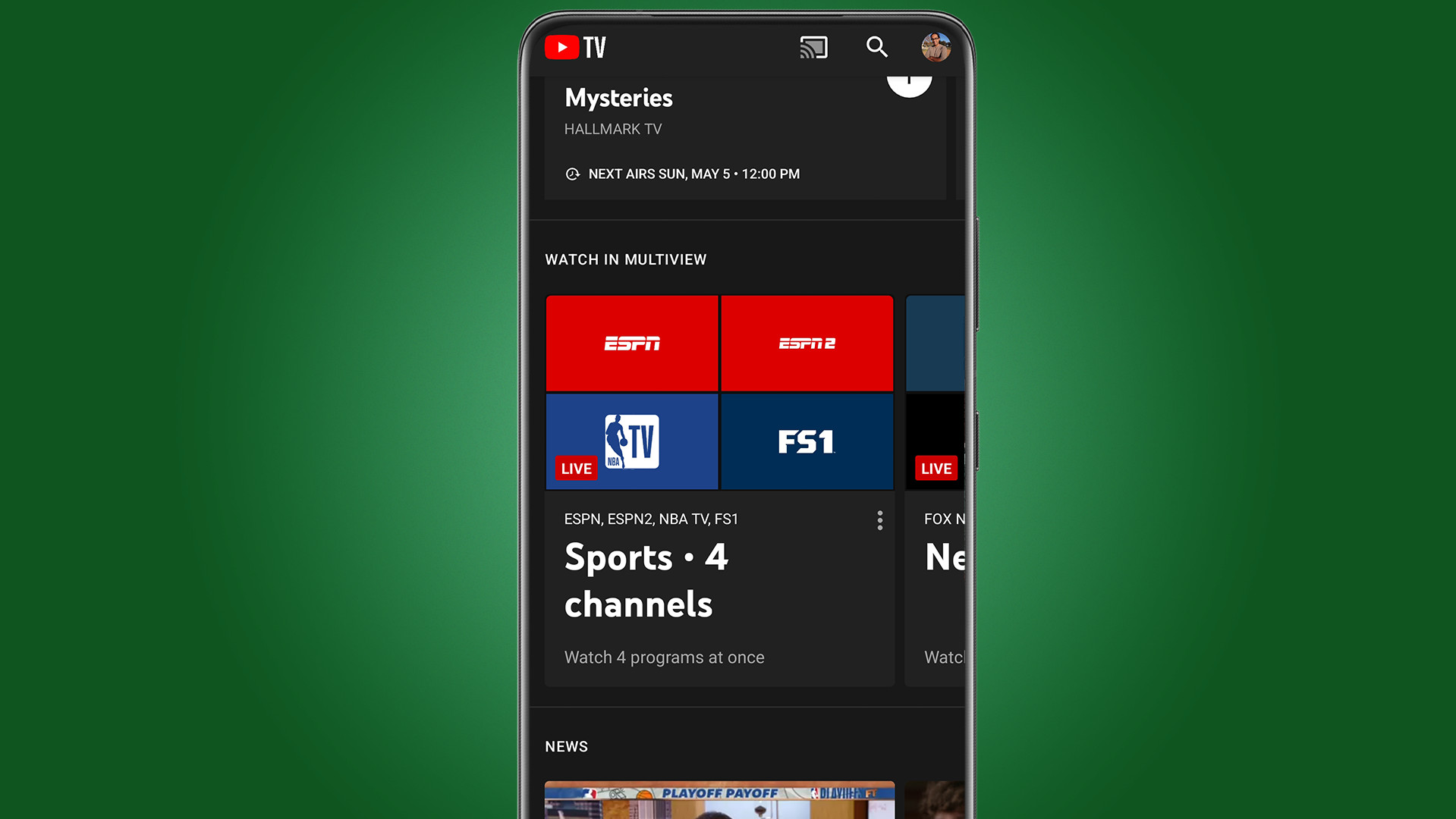
You’ll know you’ve done it correctly if the live stream has a white highlighted border around it. It’s important to mention that double tapping a source while the Play/Pause button is showing lets you expand it to full screen. Similarly, you can hit the Go To option while in a portrait view to jump to a specific game or show.
You can’t create your own Multiview setup. Users have to pick one of four pre-selected livestreams provided by the platform. The customization tool remains exclusive to the smart TVs.
According to 9To5Google, the update “can work on any device” and doesn’t require powerful hardware to run. All of the heavy lifting is done by YouTube. The publication states that Multiview is, “for the most part, limited to sports content”. However, in our experience, this wasn’t the case. We were able to watch four different news sources at once including Fox News, CNN, MSNBC, and BBC News. Alongside those were two economic programs as well as a pair of weather channels. To see the others, scroll the content carousel to the left.
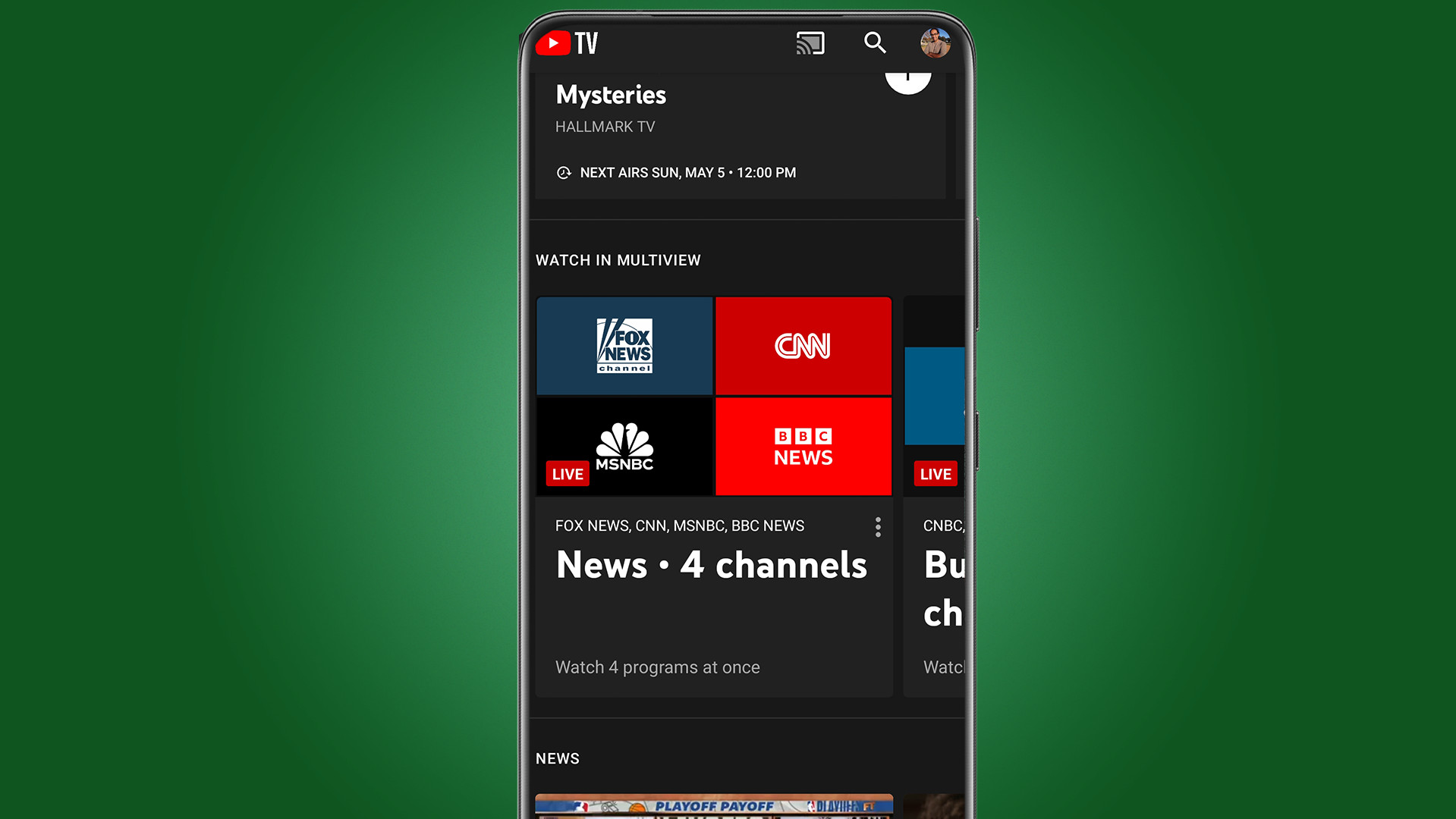
There is a chance you may not see Multiview at first. A Google representative told TheVerge the patch is in the process of rolling out to Android owners and will continue to do so over the coming weeks. Be sure to keep an eye out for the update once it arrives. If you still don’t see it, try closing YouTube TV and then opening it up again. We did that when we didn’t see the new section.
In addition to this upgrade, a handful of users have reported seeing the 1080p Enhanced option reappearing on their Apple TV. This setting lets people enjoy content in 1080p resolution at a high bitrate enabling a better quality stream. The validity of said feature is shaky since YouTube has yet to make an official announcement. So, we reached out for clarification.
While we have you, check out TechRadar’s list of the best Android phones for 2024.
[ad_2]
Source Article Link

[ad_1]
For the upcoming iPhone 16, Apple will adopt the same color-infused back glass that features on the standard iPhone 15 models, claims a new rumor out of China.
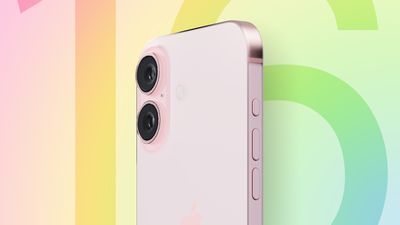
Last year, Apple debuted a custom dual-ion exchange glass process on the non-premium iPhone 15 models that gives the rear glass layer a frosted effect that contrasts with the main frame color.
Apple’s description of the effect on the iPhone 15:
“For the first time in a smartphone, colour is infused throughout the back glass, creating five beautiful colours. The back glass is strengthened with an optimised dual-ion exchange process before being polished with nanocrystalline particles and etched to create a luxurious, textured matte finish.”
According to the Weibo-based leaker “Fixed focus digital,” who claims to have seen the iPhone 16 color scheme, Apple will use the same process for the back glass on the new models, which could come in as many as seven colors this year as opposed to five.
Late last month, another Weibo source suggested Apple could extend its dual-ion exchange glass process to the back of the iPhone 16 Pro, which is expected to have the same titanium frame as the iPhone 15 Pro. However, the source of today’s leak does not mention the premium iPhone 16 models, and both Weibo accounts have yet to establish a track record for accurate Apple rumors.
Apple is expected to release the iPhone 16 series around its usual mid-September timeframe.
In his Power On newsletter today, Bloomberg’s Mark Gurman outlined some of the new products he expects Apple to announce at its “Let Loose” event on May 7. First, Gurman now believes there is a “strong possibility” that the upcoming iPad Pro models will be equipped with Apple’s next-generation M4 chip, rather than the M3 chip that debuted in the MacBook Pro and iMac six months ago. He said a …
There are widespread reports of Apple users being locked out of their Apple ID overnight for no apparent reason, requiring a password reset before they can log in again. Users say the sudden inexplicable Apple ID sign-out is occurring across multiple devices. When they attempt to sign in again they are locked out of their account and asked to reset their password in order to regain access. …
Apple is set to unveil iOS 18 during its WWDC keynote on June 10, so the software update is a little over six weeks away from being announced. Below, we recap rumored features and changes planned for the iPhone with iOS 18. iOS 18 will reportedly be the “biggest” update in the iPhone’s history, with new ChatGPT-inspired generative AI features, a more customizable Home Screen, and much more….
Bloomberg’s Mark Gurman today said that iOS 18 will “overhaul” many of Apple’s built-in apps, including Notes, Mail, Photos, and Fitness. Gurman did not reveal any specific new features planned for these apps. It was previously rumored that the Notes app will gain support for displaying more math equations, and a built-in option to record voice memos, but this is the first time we have…
New iPads are coming, and Apple is holding a virtual event to introduce them! While it appears likely to be a relatively short video event, we should be seeing new iPad Pro and iPad Air models, some new accessories, and perhaps some additional surprises. Other Apple news and rumors this week included word that Apple is FINALLY planning to introduce a native Calculator app for the iPad later…
On this week’s episode of The MacRumors Show, we discuss the announcement of Apple’s upcoming “Let loose” event, where the company is widely expected to announce new iPad models and accessories. Subscribe to The MacRumors Show YouTube channel for more videos Apple’s event invite shows an artistic render of an Apple Pencil, suggesting that iPads will be a focus of the event. Apple CEO Tim…
[ad_2]
Source Article Link

[ad_1]
Everything reminds me of Her. While ChatGPT is not as powerful as the artificial intelligence from Spike Jonze’s sci-fi romance movie, OpenAI’s experimental memory tool for its chatbot seems to suggest a future where bots are highly personalized and capable of more fluid, lifelike conversations.
OpenAI just rolled out a new feature for ChatGPT Plus subscribers called Memory, where the AI chatbot stores personal details that you share in conversations and refers to this information during future chats. Announced back in February, ChatGPT’s Memory feature was available only to a small group of users to test until late April.
While it’s expected to be available for OpenAI’s Enterprise and Team customers eventually, the feature is available first to Plus subscribers. Though, subscribers in Europe or Korea are not currently able to use ChatGPT’s Memory. It’s also not yet integrated with the GPT Store.
WIRED received early access to the feature from OpenAI, and I’ve spent some time trying it out to better understand this new functionality and to collect some advice you can use to get started. While a few specifics may change about this nascent feature, here’s what you can expect as you’re getting started with ChatGPT’s Memory.
When ChatGPT’s Memory arrived on my paid account, I received a pop-up notification explaining the fresh tool and how it can be used for remembering certain details across conversations. It’s worth noting that Memory is enabled automatically. You can easily opt out if you’d prefer by opening Settings, then Personalization, and toggling the Memory option by moving the slider to the left.
Adding facts about yourself to ChatGPT’s Memory is simple: Just chat with the bot. As you use OpenAI’s software, ChatGPT gleans personal insights from the conversations, like your name and where you live, as well as more niche observations, like your favorite movies and least favorite foods. Each time some nuggets of information is added by the chatbot, you might see a Memory updated notification. Tap on that notification to check out what was included.
[ad_2]
Source Article Link

[ad_1]
Artificial intelligence might seem a little less artificial today now that Memory is live for all ChatGPT Plus users.
After a few months of testing in both the free and pay versions of the generative AI chatbot, OpenAI chose to enable the feature, for paying customers only, in all regions except Korea and Europe.
ChatGPT‘s memory is exactly what it sounds like. During prompt-driven “conversations” with the AI, ChatGPT Plus can now remember key facts about the conversations, including details about you, and then apply that information to future interactions. Put another way, ChatGPT Plus just graduated from a somewhat disinterested acquaintance to a friend who cares enough to remember that your birthday is next week or that you recently bought a dog.
You can tell the system to implicitly remember something or just state facts about yourself that it will remember.

I know, it’s the kind of thing that could make AIs like ChatGPT far more useful or completely terrifying. Up until now, we’ve mostly dealt with generative AIs that had intense short-term memory loss. Systems like ChatGPT, Google‘s Gemini, and Microsoft CopIlot could carry on lengthy, discrete conversations where they’d do a decent job of maintaining context (the longer the conversation, the wonkier this could get). If, however, you ended one conversation and started another, it was like meeting a completely different person who knew nothing about you or the conversation you had three minutes ago.
Unlike human memory, which can remember some things forever but easily forget others, ChatGPT Plus Memory is in your control.
As I mentioned earlier, you can help ChatGPT Plus build its Memory by telling it things about yourself that you want it to remember. By doing so, you’ll notice that when you ask, say, your age or where you live, it will be able to tell you. ChatGPT will also take those details and combine them with future queries, which could shorten your conversation and make the results more accurate and useful.
Memory is enabled by default. You can find it under Settings/Personalization. There’s a toggle switch where you can turn it off.
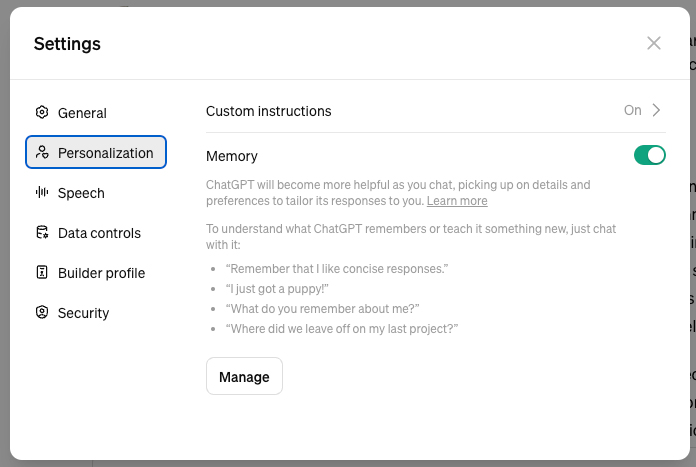
To see all of ChatGPT Plus’ memories, you select the Manage button, which sits right below the Memory description and toggle. Initially, even though I told ChatGPT Plus to remember things about me, my memory box remained empty. If I had found any in there, I could clear all of them or select only the ones I wanted to remove.
However, when I told ChatGPT “I really love houseplants,” I saw a little notation appear right above its response that said: “Memory updated.” When I selected that, the memory, “Loves houseplants”, appeared below it, and right below that, a link to Manage memories.
Later, when I asked ChatGPT Plus how I might liven up my home, it answered, in part (I bolded the relevant bit), “Adding some houseplants is a great way to liven up your home! They not only beautify the space but also improve air quality and can enhance your mood. Since you love houseplants, you might consider diversifying the types you have….”
As noted, Memory is not free. A ChatGPT Plus subscription, which gives you, among other things, access to the GPT-4 model, costs $20 /£20 a month. I asked OpenAI if any version of Memory is coming to non-paying ChatGPT users and will update this post with their response.
Sure, ChatGPT Plus Memory nudges the generative AI in the direction of humanity, but there is, as far as I know, no way to go into anyone’s mind and delete some or all memories.
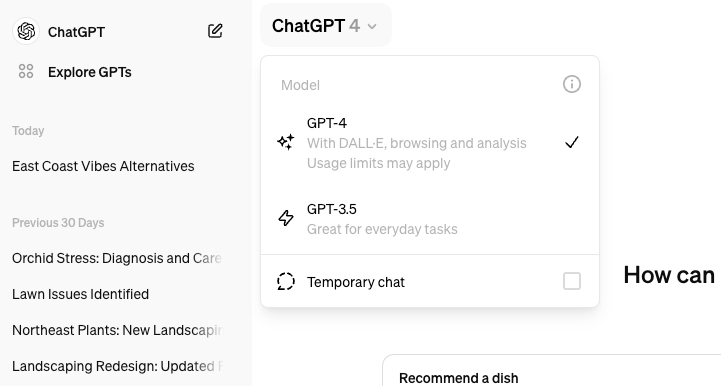
While you can turn off Memories, you might like the middle option, which uses the new “Temporary Chat” to introduce short-term amnesia to the system.
To use it, choose the ChatGPT model you want from the drop-down menu and then select “Temporary chat”. Now, nothing you share with ChatGPT Plus during that chat will be added to its memory.
Come to think of it, a real friend, who only remembers what you want them to, could come in handy.
[ad_2]
Source Article Link

[ad_1]
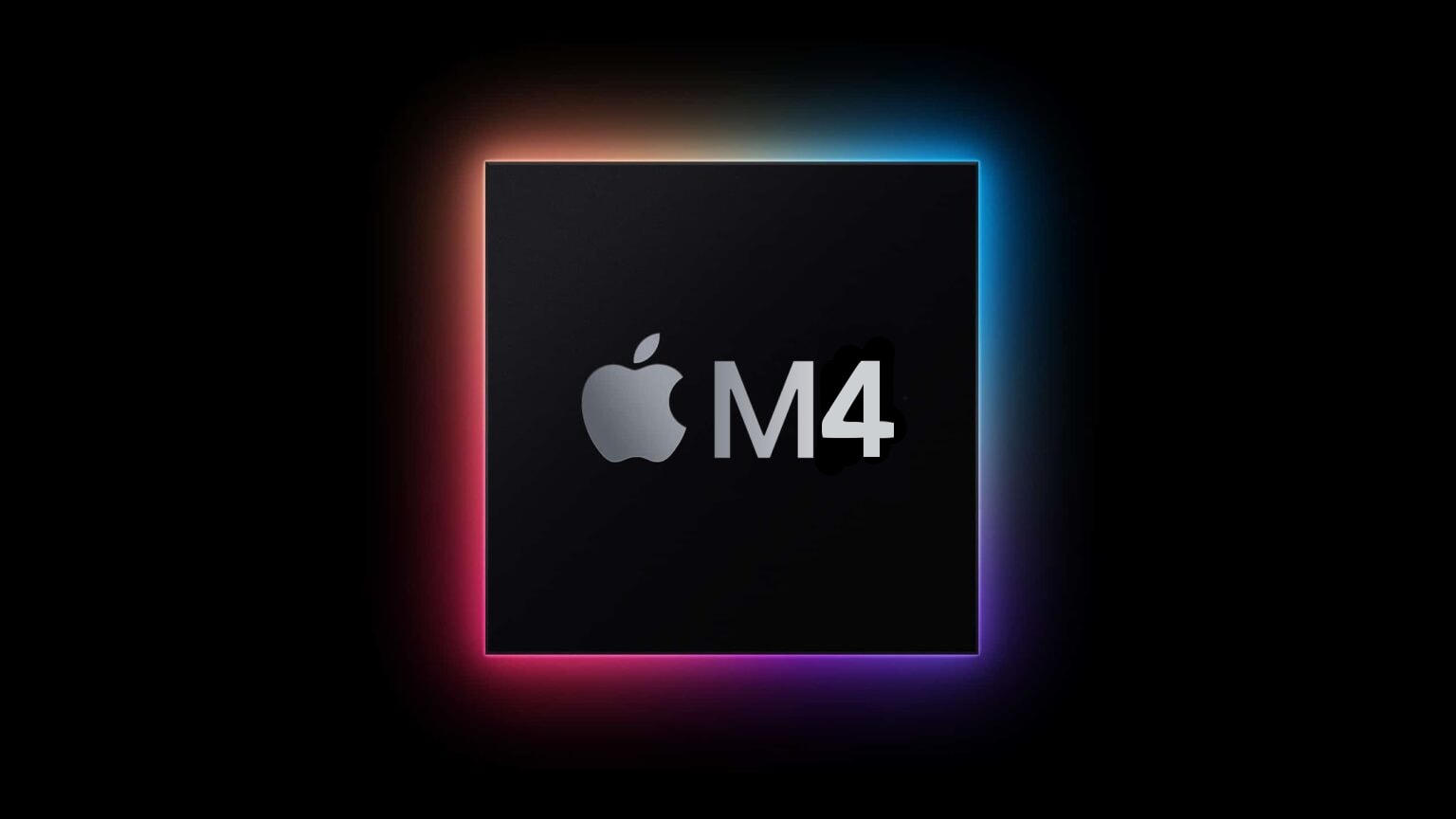
Apple’s upcoming OLED iPad Pro will reportedly begin the company’s shift into AI hardware. Apparently, the new tablets will sport the next-gen M4 chip to power all the AI features.
If this report is accurate, Apple will skip bringing its existing M3 SoC to its flagship tablet lineup.
Apple unveiled its 3nm-based M3 chip just a few months earlier, in October 2023. It introduced notable performance and efficiency improvements along with a faster and more efficient Neural Engine.
A recent report suggests the company has planned even bigger AI-focused upgrades for its next-gen M4 chip. The SoC would power many AI features Apple has planned for its upcoming Macs.
But Apple has typically announced a new M-series after 12-15 months. So, it would be an odd move for the company to unveil the M4 chip so soon.
As per Mark Gurman’s latest Power On newsletter release, this will allow Apple to “position the tablet as its first truly AI-powered device.” Every new product the company releases after this will also highlight its AI capabilities. The upcoming iPhone 16’s A18 chip will also reportedly center around AI.
An M4 chip could help Apple better justify the OLED iPad Pro’s rumored price increase.
Apple is also expected to unveil a refreshed Apple Pencil, in addition to introducing a new iPad Pro, iPad Air, and a revamped Magic Keyboard. The company’s May 7th ‘Let Loose’ event invite does a good job of teasing the accessory already.
While the rumor mill has been relatively silent about the third-gen Apple Pencil features, Gurman says it will sport haptic feedback. If true, this would be the first time Apple’s stylus for the iPad has incorporated this technology. It would also help the Apple Pencil 3 stand out from other styluses on the market, as none offer any form of haptic feedback.
[ad_2]
Source Article Link

[ad_1]
I love Fujifilm. Anyone that has followed my work in recent years will have heard me raving about it as the ideal ecosystem for travel photographers. The compact size of cameras like the X100VI, stylized film simulations, the wonderful selection of small and sharp lenses: all of it is perfectly targeted at enthusiasts and global nomads looking to express their creativity and share the places they’ve seen. So why on earth did I sell all my Fujifilm gear and change systems?
For all of Fujifilm’s appealing aesthetics and features, there are a number of compromises that come with it, which can make things challenging for those of us who make our living with our cameras. First of all, the Fujifilm X-Series cameras are exclusively cropped sensors, which means less dynamic range, less subject separation (bokeh) and worse performance in low-light situations when compared to full-frame sensors. Although Fujifilm has done a lot to improve the autofocus in its cameras in the past two years, the phase-detect systems of other brands have proven to be notably faster and more reliable.
One thing that no one else could compete with, however, was Fujifilm’s highly-customizable film simulations, allowing you to get beautifully stylized images straight out of camera. Nikon and Ricoh have had stabs at it, but no one could top Fujifilm on this…until now.

When Panasonic announced the new Lumix S5 II, hybrid shooters were once again thrilled to be given such a feature-rich camera for such a competitive price. Alongside open gate video (being able to record from the full width and height of the sensor) and all-new autofocus system, Panasonic snuck in a little feature which got very little attention: Real Time LUTs.
A LUT (Look Up Table) is similar to a preset or filter which changes the colors and tones of an image. They are typically used in video editing to create the final look of the film, however Panasonic has allowed LUTs to be applied in real-time as you take photos or videos.
The difference between this and Fujifilm’s system though, is that you can apply any LUT you like, without being limited to just tweaking existing simulations in your camera. Once you’ve got them set up, you have all the joy of producing images and videos that are ready to post, but with all the added benefits of a full-frame sensor.

To some of you, this may not seem like a crucial feature, and that’s fine: we all use different tools to inspire us creatively and to produce the results our clients are looking for. In my work, Real Time LUTs allows me to load my signature styles into the camera and then see the final image come to life so I can decide exactly when to press the shutter. No trying to guess what it will look like after 30 mins in Photoshop.
Real Time LUTs also allows me to show photos to clients and talent during shoots, straight on my camera, and it never fails to make an impact when they see something that looks so cinematic coming together on the spot.
For those of you concerned about baking a look into your files, you can shoot RAW + JPEG (just like with Fuji) and keep an untouched RAW for you to edit separately if you decide to go a different way with it. In short, this Lumix-exclusive feature could help you develop your own signature style which will make your work unique and recognizable.
If you already own a Panasonic camera with Real Time LUTs, which includes the full-frame Lumix S5II, Lumix S5IIX and now the MFT Lumix G9 II, simply follow the steps below and you can start working with real-time LUTs as well.
Much like presets, there are a huge number of LUTs available online for each camera, some free and some paid. If you’ve got the budget for it, the Kinetic Pack by Gamut is absolutely fantastic, in fact, every photo in this article was taken using a LUT from this collection.
Once you have downloaded your favorite choices, they will show on your computer as .cube or .vlt files (LUTs meant for other brands will require you convert them using LUTcalc). Copy them onto an SD card, then pop it into your camera.
Navigate to Image Quality settings, and you will see “LUT Library” appear as the second item on the list. Click into it, and you will see the standard Vlog_09 LUT that comes built into the cameras, followed by 10 empty slots for your own files. Select an empty slot and it will take you to the files on your SD card, where you can choose which LUT you want to load. Once selected, it will be saved to your camera, and you can switch SD Cards without it disappearing.
In both photo and movie modes, you can access “Photo Style” in the menu, and toggle across until you reach “Real Time LUT” which will set the standard colors as V-Log and allow you to choose which LUT to use. From there on, it will be baked into your JPEGs and video files, just like Fujifilm. If you want to have even more control, you can go back to the “Photo Style” menu and scroll until you find “My Photo Style 1” where you can choose a LUT as well as control which base profile you have (ie. Vivid or Natural), which will open up a whole new variety of contrast and saturation levels for you.

There you have it. My full-frame Panasonic Lumix S5 II packed with hybrid shooting options, and the ability to produce stunning images and videos without a minute spent on editing. Fujifilm, I still love you, but I’m afraid it’s Lumix that takes this round.
[ad_2]
Source Article Link